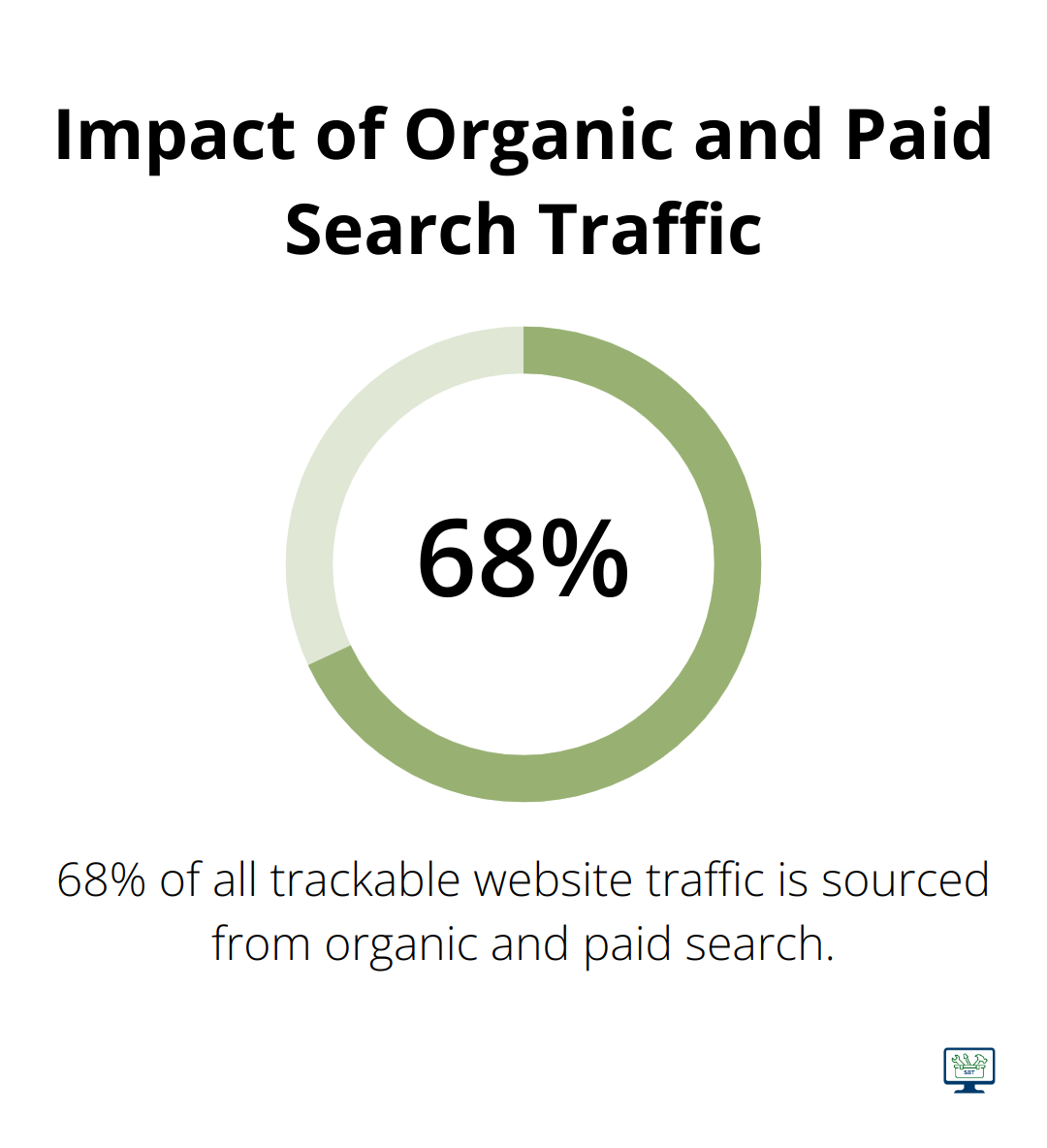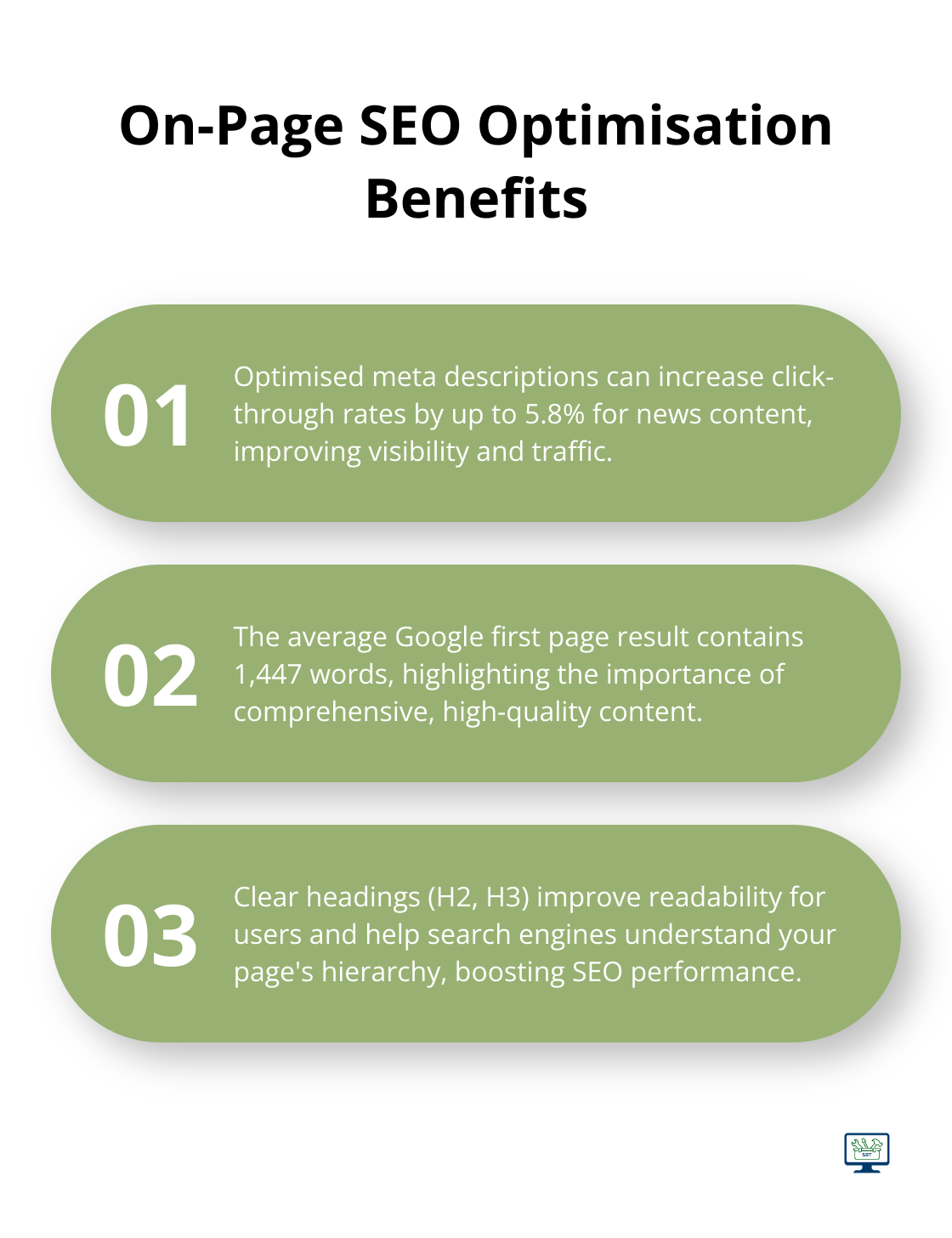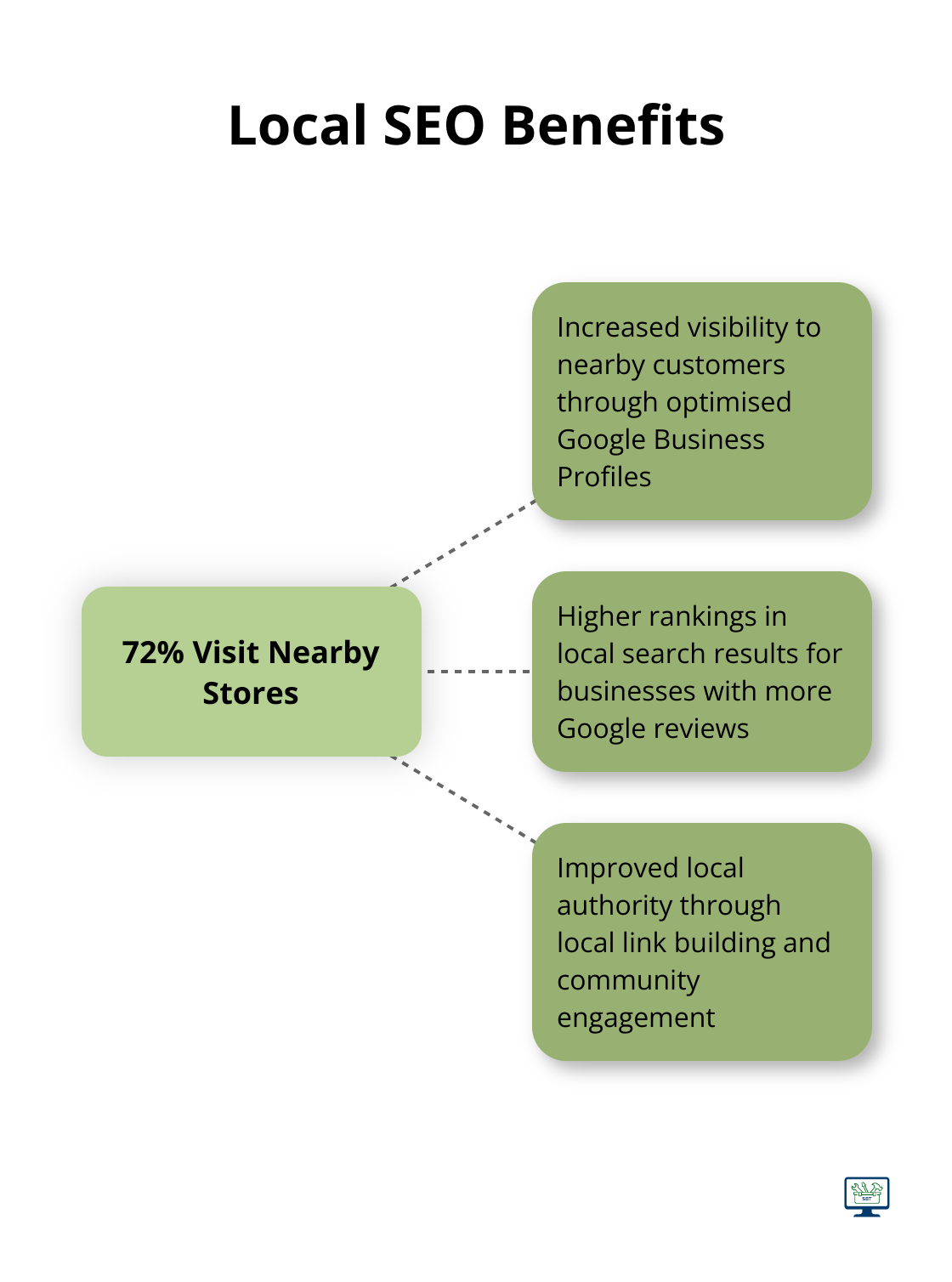How to Boost Organic Search Engine Optimisation

Published On Jun 08,2025
At WebsiteStrategies, we know that search engine optimisation organic techniques are essential for online success. Boosting your website’s visibility in search results can drive more traffic and potential customers to your site.
In this post, we’ll explore effective strategies to improve your organic SEO and outrank your competitors. From on-page optimisations to off-page tactics, we’ll cover everything you need to know to climb the search engine rankings.
What is Organic SEO?
The Foundation of Search Engine Visibility
Organic SEO is the process of optimising a website to rank higher in search engine results naturally, without paid advertising. This practice drives sustainable traffic and lead generation for businesses of all sizes.
The Impact of Organic Search
A study by BrightEdge revealed that 68% of all trackable website traffic is sourced from organic traffic and Paid Search, vastly exceeding all other channels, including Display and Social Media. This statistic highlights the importance of a robust organic SEO strategy. Organic search results earn clicks based on relevance and quality, which leads to higher trust and engagement from users (unlike paid advertising).

Essential Components for SEO Success
To excel in organic SEO, focus on these critical elements:
- Keyword Research: Identify terms your target audience uses to find products or services like yours. Tools such as Ahrefs or SEMrush help uncover valuable keywords.
- On-Page Optimisation: Create compelling title tags, meta descriptions, and content that incorporate your target keywords naturally.
- Technical SEO: Make your website crawlable, structure it logically, and ensure fast loading times. Google’s PageSpeed Insights tool identifies areas for improvement.
- Content Creation: Develop high-quality, informative content that addresses user needs and questions. A Content Marketing Institute report found that 74% of businesses say content marketing helped generate demand/leads.
- Link Building: Earn backlinks from reputable websites to boost your site’s authority. Create linkable assets (like original research or comprehensive guides) to attract quality links.
Organic vs. Paid Search: Key Differences
Organic and paid search both drive traffic, but they differ significantly in approach and results:
Organic search results appear based on their relevance and quality, as determined by search engine algorithms. These results typically receive more clicks, with studies showing that the first organic result on Google has an average click-through rate of 31.7%.
Paid search results are advertisements that appear at the top or bottom of SERPs. Advertisers pay each time a user clicks on their ad (pay-per-click or PPC). While PPC provides immediate visibility, it stops generating traffic when you stop paying.
A balanced approach often yields the best results, using paid search for quick wins while building a strong organic SEO foundation for long-term success. Some businesses achieve a 200% increase in organic traffic within six months by implementing this strategy.
The Enduring Value of Organic SEO
Investing in organic SEO offers compounding returns over time. As your website’s authority grows and your content ranks for more keywords, you’ll continue to see traffic increases without proportionally increasing your budget.
A 2024 Gartner report revealed that businesses with strong organic search presence saw a 15% year-over-year increase in customer retention rates. This statistic underscores the trust-building nature of organic search visibility.
With the fundamentals of organic SEO established, let’s explore the specific on-page techniques that will help your website climb the search engine rankings.
How to Optimize Your Website for Search Engines
At WebsiteStrategies, we’ve witnessed the dramatic impact of effective on-page SEO on a website’s search engine rankings. Let’s explore some practical techniques you can implement today to boost your site’s visibility.
Craft Compelling Title Tags and Meta Descriptions
Your title tag is the first element users see in search results, so it must pack a punch. Keep it under 60 characters and place your primary keyword at the beginning. For instance, a plumber in Brisbane might use: “Emergency Plumbing Services Brisbane | 24/7 Repairs”.
Meta descriptions influence click-through rates, despite not being a direct ranking factor. Write a concise, benefit-driven description under 160 characters. Include a call-to-action to encourage clicks. A study by Sistrix found that optimised meta descriptions can increase click-through rates by up to 5.8% for news content.
Create Content That Ranks and Converts
High-quality, relevant content forms the backbone of SEO. Focus on creating in-depth, authoritative pieces that answer your audience’s questions. A Backlinko study revealed that the average Google first page result contains 1,447 words (however, quality always trumps quantity).
Use tools like AnswerThePublic to uncover questions your audience asks, then create content that provides comprehensive answers. Structure your content with clear headings (H2, H3) to improve readability and help search engines understand your page’s hierarchy.

Enhance Site Structure and Internal Linking
A logical site structure helps both users and search engines navigate your content. Implement a clear hierarchy, with your homepage at the top and category pages linking to related subpages.
Internal linking is a powerful, often overlooked SEO tactic. It distributes page authority throughout your site and helps search engines discover new content. Try to include 3-5 relevant internal links per page, using descriptive anchor text.
Optimise Visual Elements for Better Performance
Images and videos can significantly enhance user experience, but they need optimisation to avoid slowing down your site. Compress images without sacrificing quality using tools like TinyPNG. Research shows that optimisation of image size can lead to load time reduction by up to 80%.
Always use descriptive, keyword-rich file names and alt text for images. This helps search engines understand the content and context of your visuals, potentially boosting your rankings in image search results.
Video content can increase time on page (a positive ranking signal). Host videos on a fast, reliable platform and include a transcript to provide additional SEO value.
These on-page SEO techniques lay a solid foundation for improved search visibility. SEO is an ongoing process, not a one-time fix. Regular audits and updates of your on-page elements maintain and improve your rankings over time. As we move forward, let’s explore off-page SEO strategies that complement these on-page efforts and further boost your website’s authority in search engine results.
Mastering Off-Page SEO Tactics
Off-page SEO plays a vital role in a comprehensive search engine optimisation strategy. While on-page elements create the foundation, off-page tactics significantly influence how search engines perceive your website’s authority and relevance.
The Power of High-Quality Backlinks
Backlinks remain a cornerstone of off-page SEO. A study by Ahrefs found that the number of referring domains strongly correlates with Google rankings. However, quality surpasses quantity. A single link from a reputable, high-authority website can outweigh dozens from low-quality sources.
To build high-quality backlinks, create linkable assets. These include original research, comprehensive guides, or innovative tools. For instance, Moz’s annual State of Local SEO Industry Report consistently attracts backlinks from industry publications and blogs.
Guest posting on relevant, authoritative sites in your niche proves effective. When executed properly, it not only builds links but also establishes you as an industry thought leader. However, avoid mass guest posting on low-quality sites, as this can trigger Google penalties.
Leveraging Social Media for SEO Benefits
While social media signals don’t directly impact rankings, they indirectly influence SEO. A strong social media presence can increase brand visibility, drive traffic to your website, and create opportunities for natural link building.
Twitter, in particular, can boost SEO efforts. Google indexes tweets in real-time, making it an excellent platform for distributing content and increasing visibility. LinkedIn, on the other hand, suits B2B companies looking to establish industry authority.
Local SEO: Dominating Your Geographic Market
For businesses serving specific geographic areas, local SEO proves crucial. According to Backlinko, 72% of consumers who did a local search visited a store within five miles. Optimising for local search can dramatically increase visibility to nearby customers.
Start by claiming and optimising your Google Business Profile (formerly Google My Business). Ensure your business name, address, and phone number (NAP) remain consistent across all online directories. Inconsistent NAP information can confuse search engines and harm your local rankings.
Encourage satisfied customers to leave reviews on your Google Business Profile. A study by BrightLocal found that businesses with more reviews in Google Business Profiles tend to rank higher in local search results.
Local link building serves as another powerful tactic. Seek opportunities to get mentioned in local news outlets, sponsor local events, or partner with other local businesses. These local links signal to Google that your business integrates well within the community.

Off-page SEO requires ongoing effort. Consistency and patience yield results. While some tactics may produce quick wins, building lasting authority and visibility takes 3-6 months to see noticeable improvements in rankings and traffic. Implement these strategies and continually refine your approach based on results to dominate search engine results pages.
Final Thoughts
Search engine optimisation organic techniques form the foundation of digital success. We explored key strategies to boost website visibility and attract qualified traffic through on-page and off-page tactics. These approaches create a comprehensive strategy to climb search engine rankings and outperform competitors.
SEO requires continuous effort as search algorithms evolve and user behaviours change. Regular monitoring and optimisation will maintain and improve your search visibility over time. This includes analysing website performance and adjusting strategies based on data-driven insights.
WebsiteStrategies specialises in transforming websites into lead-generating assets through tailored SEO consultancy (and comprehensive audits). We provide the expertise needed to navigate the complex world of search engine optimisation organic techniques. Start optimising today to watch your online presence grow.
